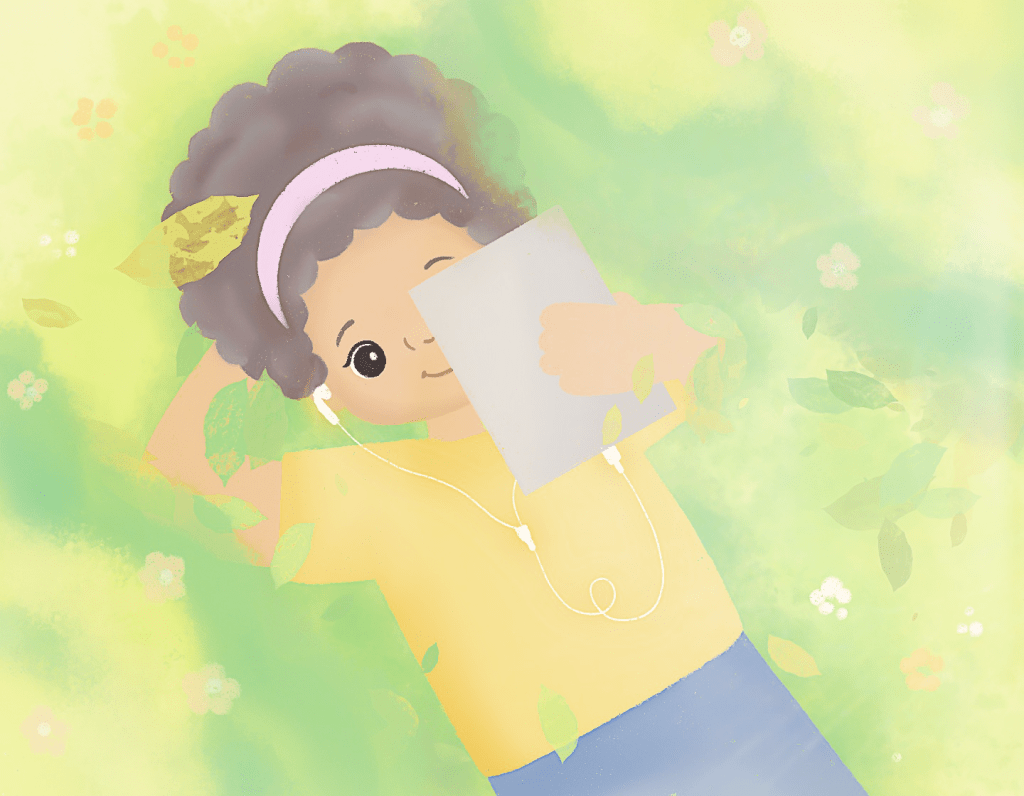Art by Vivian Hsia
Transparency Item: The Perspectives section of the Graphic is comprised of articles based on opinion. This is the opinion and perspective of the writer.
I love my phone. I love my phone so much, I named her Camille. However, I spend about two hours a day aimlessly scrolling through social media. That is 14 hours a week and 728 hours a year I spend watching silly dog videos, composing tweets, scrolling through emails to see what assignments I need to be stressing out about and checking my daily to-do list.
Last year, my New Year’s Resolution was to read more. As an English major, I spend a lot of my time reading for class. I realized when looking back at my reading list for 2021, the majority of what I had read was for class and I had barely read any books for myself.
Going into 2022, I wanted to read more for fun. I began the year with momentum, devouring cheesy romance novels, short story collections and graphic novels. Although, soon my academic responsibilities took over, and reading for fun began to feel like a chore.
After reading all day for class, did I really want to crawl into bed and have to keep staring at more font size 12 Times New Roman?
Dreading reading the pile of books I had collected, I began to use my phone more and more. I scrolled through social media for hours, making myself feel like I was doing something even if I wasn’t.
Going into this school year, I wanted to find a way that could make reading fun again. I downloaded the app Libby at the suggestion of a friend. Libby is a free-to-download and free-to-use alternative to Amazon‘s Kindle and Audible.
Libby works by partnering with your local library’s online reading service OverDrive — which the majority of American public libraries have — meaning as long as you have a library card, you have access to thousands of e-books and audiobooks. Personally, I love Libby because I love supporting my library back home even when I’m away.
On the days I get home from school and work and all I want to do is crawl into bed and aimlessly scroll, I open Libby and read. If my eyes are tired, I can turn up the font size or listen to an audiobook.
The only downside is you do have to place books on hold, and sometimes there can be a long wait time for more popular books. However, I’ve found that encourages me to read slower and maybe read other books while I’m waiting for my hold.
Previously this semester, Perspectives Writer Madison Luc argued students should scroll less and read more. I agree with her; however, I think we should encourage people to read, no matter what form it takes.
The mode of reading doesn’t matter; what matters is that people are getting access to a plethora of new books, characters, plots and stories. Whether it is print, digital or audio, reading more is always a good thing.
It’s nice that when I am in line at Starbucks, instead of opening an abundance of social media apps, I can open Libby and get a few extra minutes of reading in. Or, when I’m on the shuttle or walking to class, I can listen to an audiobook.
Just like how there is a book or book genre for everyone, there’s a way to read for everyone, too. If reading print doesn’t work for you, try reading digitally or an audiobook. You may find a reading style that causes you to fall back in love with reading.
_________________
Follow the Graphic on Twitter: @PeppGraphic
Email Hope Lockwood: hope.lockwood@pepperdine.edu

